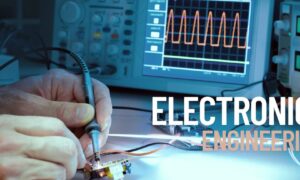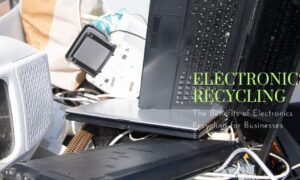Welcome to the world of modern technology, where our lives are intertwined with electronic components that power and shape the way we live, work, and communicate. From the humble resistor to the mighty microprocessor, these building blocks have revolutionized every aspect of our existence. In this blog post, we embark on an exhilarating journey through the labyrinth of electronic components – unveiling their secrets while unraveling their significance in our daily lives.
Introduction to Electronic Components
As electronic devices become increasingly commonplace in our lives, it’s important to have a basic understanding of the components that make them up. In this section, we’ll introduce some of the most common electronic components and explain how they work.
One of the most basic components is the resistor. Resistors are used to control the flow of current in a circuit and are usually represented by a zig-zag symbol. The amount of resistance a resistor offers is measured in ohms, and resistors can be combined to create circuits with different overall resistance levels.
Another common component is the capacitor. Capacitors store electrical energy and are often used to smooth out fluctuations in voltage. They’re represented by a curved line with two parallel plates inside. The size of the capacitor (measured in farads) determines how much energy it can store.
Diodes allow current to flow through them in one direction only and are typically used to protect other components from damage caused by reverse voltages. They’re represented by an arrow pointing in the direction that current can flow through them.
Transistors are semiconductor devices that can be used to amplify or switch electronic signals. They’re represented by two triangles connected at their bases. There are two types of transistors: n-type transistors, which have electrons as their charge carriers, and p-type transistors, which have holes as their charge carriers.
Integrated circuits (ICs) are tiny electronic circuits that can be used to perform a wide variety of tasks. They’re often represented by a rectangle with many pins protruding from one side. ICs are commonly used in computers, cell phones, and other digital devices.
Finally, there are switches, which control the flow of current in a circuit and are typically represented by an oval with two arrows pointing in opposite directions. Switches can be used to turn devices on or off or switch between different modes of operation.
Types of Electronic Components
There are countless types of electronic components, but they can generally be grouped into a few broad categories. Active components are those that require a power source to function, while passive components don’t need an external power source. Discrete components are those that exist as separate entities, while integrated circuits (ICs) are composed of multiple transistors and other components that have been miniaturized and placed on a single chip.
Some common active electronic components include transistors, diodes, and vacuum tubes. Passive electronic components include resistors, capacitors, and inductors. Common discrete semiconductor devices include bipolar junction transistors (BJTs) and metal-oxide-semiconductor field-effect transistors (MOSFETs). Integrated circuits can be digital or analog; common examples of digital ICs include microprocessors and memory chips, while analog ICs include operational amplifiers (op-amps) and audio power amplifiers.
This is just a brief overview of the various types of electronic components; many more specialized types serve specific functions. However, understanding the basics of these different component types is essential for anyone interested in learning about electronics.
Integrated Circuits (ICs)
An integrated circuit, or IC, is a small electronic device made up of transistors, resistors, and capacitors. These devices are used in a wide variety of electronic products, from computers to cell phones.
ICs are classified by the number of transistors they contain. The first generation of ICs contained only a few transistors, while today’s ICs can contain millions of transistors. This increase in transistor count has allowed for smaller, more powerful ICs.
ICs are manufactured using a process called photolithography. A silicon wafer is coated with a light-sensitive material, called photoresist. A pattern is then projected onto the wafer using ultraviolet light. The exposed areas of the wafer are etched away, leaving behind the desired circuitry.
The completed IC is then encased in a plastic or ceramic package to protect it from the environment. Lead wires are attached to the package, which provides an electrical connection to the outside world.
Resistors
Resistors are one of the basic electronic components. They are used to control the flow of current in a circuit. The resistance of a resistor is measured in ohms. The higher the resistance of a resistor, the less current will flow through it.
There are two main types of resistors: fixed resistors and variable resistors. Fixed resistors have a fixed value of resistance, while variable resistors can be adjusted to change their resistance.
Resistors are used in many different applications, such as controlling the brightness of an LED or limiting the current flowing through a circuit.
Capacitors
Capacitors are one of the most important electronic components. They are used in a wide range of applications, from filtering to energy storage.
A capacitor is a device that stores electrical energy in an electric field. It is composed of two conductors (plates) separated by an insulator (dielectric). When a voltage is applied across the plates, an electric field is created that stores energy in the form of an electrostatic potential difference between the plates.
The amount of energy that can be stored in a capacitor is determined by its capacitance, which is measured in farads. The higher the capacitance, the greater the amount of energy that can be stored. Capacitors are available in a variety of sizes and shapes and with a wide range of capacitances.
Applications for capacitors include power supplies, filters, timing circuits, and signal coupling. Capacitors are also used in electrical transmission systems to smooth out voltage fluctuations.
Transistors
Transistors are one of the most important electronic components. They are used in almost all electronic devices and circuits. A transistor is a semiconductor device that can be used to amplify or switch electronic signals. Transistors are made of materials like germanium, silicon, and carbon.
There are two types of transistors: bipolar transistors and field-effect transistors (FETs). Bipolar transistors have two terminals, called the collector and the emitter. The current flowing between the collector and the emitter can be controlled by the third terminal, called the base. FETs have three terminals, called the source, the gate, and the drain. The current flowing between the source and drain can be controlled by the voltage applied to the gate terminal.
Bipolar transistors are used for amplification while FETs are used for switching applications. Both types of transistors can be used for digital or analog applications.
Diodes
Diodes are one of the most basic and essential electronic components. They are used in a wide variety of electronic devices and circuits, from simple LED lights to complex computers.
Diodes are made of two terminals, called the anode and the cathode. The anode is the positive terminal, and the cathode is the negative terminal. Diodes allow current to flow through them in one direction only, from the anode to the cathode. This makes them very useful for controlling the flow of current in circuits.
Diodes can be made from a variety of materials, but most common diodes are made from silicon. Silicon diodes are very efficient and have a very low forward voltage drop, which means they lose less power when conducting current.
There are many different types of diodes available, each with its unique characteristics. Some common types of diodes include rectifier diodes, more zen diodes, LEDs, and photoelectric diodes.
LEDs
While LEDs have been around for decades, they are now being used more and more in a variety of applications. As an energy-efficient and long-lasting alternative to traditional incandescent light bulbs, LEDs (light-emitting diodes) are now being used in everything from flashlights to car headlights.
In addition to their efficiency and durability, LEDs offer several other advantages over traditional light sources. For example, LEDs can be turned on and off very quickly, which makes them ideal for use in electronic devices such as computers and TVs. LED lights also emit very little heat, making them safer to use than other types of light bulbs.
Despite their many benefits, LEDs do have a few drawbacks. One is that they are not yet as bright as some other types of lightbulbs. Additionally, LEDs can be more expensive than traditional lightbulbs, although the price is dropping as technology improves.
LEDs are a versatile and energy-saving option for lighting your home or office. If you are looking for an efficient and long-lasting light source, LED lights are worth considering!
Relays & Switches
Switches and relays are two essential components in any modern electronic device. Switches control the flow of electricity in a circuit, while relays are used to turn circuits on and off.
Both switches and relays are available in a variety of configurations, depending on the application. For example, push-button switches are commonly used to control small electronic devices, while more complex options like timer switches are used in industrial settings.
Relays, on the other hand, are often used to control larger devices or systems. They can be used to turn on lights, motors, or other electrical loads. In some cases, relays can also be used to provide safety features, such as disconnecting power to a circuit if it becomes overloaded.
Microcontrollers & Processors
Microcontrollers and processors are the brains of modern technology. They are responsible for controlling the flow of information and executing commands. Microcontrollers are found in a wide range of devices, from cars and appliances to computers and smartphones. Processors, on the other hand, are used in larger systems such as servers and supercomputers.
Microcontrollers typically have a few kilobytes of ROM and RAM, while processors can have several megabytes. Both types of devices use a clock speed to synchronize their internal operations. Microcontrollers often have a lower clock speed than processors because they don’t need to handle as much information.
Microcontrollers are designed to perform specific tasks, while processors are designed to be more general-purpose. This means that microcontrollers are usually simpler and more efficient than processors. However, processor technology is constantly evolving, so newer models may be able to perform some tasks that were once only possible with microcontrollers.
Displays and Sensors
There are many different types of displays and sensors used in modern technology, each with its unique benefits and drawbacks.
One of the most common types of display is the liquid crystal display (LCD). LCDs are used in a wide variety of electronic devices, from televisions and computers to cell phones and digital cameras. They are known for their clear, sharp images and low power consumption. However, they can be susceptible to screen burn-in if displaying a static image for too long, and their refresh rates can be slower than other types of displays.
Organic light-emitting diode (OLED) displays are another popular type of display, especially for smaller devices like cell phones and smartwatches. OLEDs emit their light, so they don’t require a backlight like LCDs do. This makes them thinner and more energy-efficient. OLEDs also have faster refresh rates and better contrast ratios than LCDs. However, they can suffer from image retention if displaying a static image for too long, and their lifespan is shorter than that of LCDs.
LED screens are similar to OLED screens in that they emit their light, but they use LED lights instead of organic ones. This makes them more energy-efficient than OLEDs while still providing good image quality. LED screens also don’t suffer from image retention or screen burn-in like LCDs can.
How Electronics Impact our Lives?
In our modern world, electronics are everywhere. They are in our homes, our workplaces, our cars, and even on our wrists. Electronics make our lives easier, more efficient, and more connected. Here’s a look at how electronics impact our lives:
Convenience: Electronics make many tasks more convenient. For example, we can now pay for groceries with the tap of a smartphone, start our cars from inside the house on a cold morning, and get directions without pulling over to consult a map.
Communication: Electronics have also transformed communication. We can now video chat with family and friends who live far away, send important documents instantly via email, and stay connected with loved ones through social media.
Entertainment: Electronics provide us with endless entertainment options. We can stream our favorite movies and TV shows, play video games, listen to music, and read books electronically.
Conclusion
We hope this article has provided a good overview of the various electronic components that are essential to modern technology. From transistors and capacitors to resistors and integrated circuits, these components have enabled us to create powerful devices with unprecedented capabilities. As our understanding of electronics continues to grow, we can look forward to an ever-expanding range of possibilities for creating incredible new technologies.



































